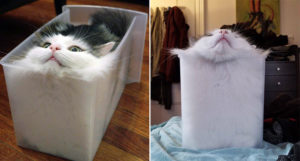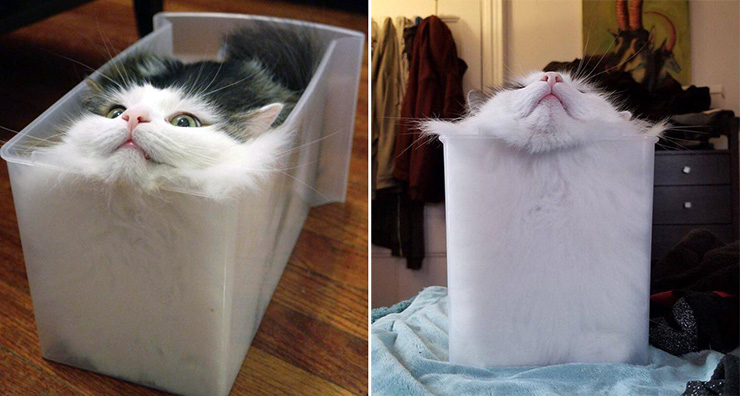In 2017, the world was introduced to a quirky research paper that won the Ig Nobel Prize in Physics. French scientist Marc-Antoine Fardin’s work on the rheology of cats, titled “On the Rheology of Cats,” proved that cats can indeed flow like liquids, and this phenomenon captured the attention of many. The Ig Nobel Prize is an award that honors unusual or unexpected research studies that often make people laugh before they make them think.
This article will delve into the details of this research, discussing the methodology, findings, and implications of Fardin’s work. Additionally, we will explore other fascinating studies recognized by the Ig Nobel Prize and their contributions to scientific understanding.
Understanding the Rheology of Cats

Methodology
Fardin’s research aimed to examine the fluid dynamics of cats, specifically looking at whether felines could be considered non-Newtonian fluids. Non-Newtonian liquids display properties of both solids and liquids, meaning they can behave like a liquid under certain conditions and a solid under others.
To conduct his study, Fardin analyzed numerous videos and images of cats in different positions, specifically focusing on instances when cats contorted themselves to fit inside containers such as boxes, bowls, and vases. He then used mathematical equations and data from these observations to determine how well the movement of cats could be modeled using principles of fluid mechanics.
Findings

Fardin’s analysis showed that, at times, cats did appear to exhibit qualities consistent with those of non-Newtonian fluids. Specifically, he found that cats could mold themselves to fit into tight spaces by redistributing their body mass and minimizing the use of their limbs. This characteristic allowed them to adapt to different environmental pressures and challenges and meant that they could temporarily transform into a liquid form.
Additionally, Fardin found that cats’ physical flexibility allowed them to recover quickly from falls or other impacts, another characteristic of non-Newtonian fluids. He also discovered that younger, more active cats were more likely to display fluid-like behavior than older or less active cats.
Implications
While the study on the rheology of cats may seem trivial, it has interesting implications for both the scientific and everyday worlds. For one, Fardin’s research provides an example of how principles of fluid mechanics can be applied to diverse systems, including animals and even people. Understanding the behavior of non-Newtonian fluids is crucial in fields such as engineering and physics and could lead to new innovations and discoveries in these areas.
Furthermore, the study highlights the remarkable adaptability and resilience of cats, which could have implications for animal welfare and veterinary medicine. By understanding how cats can react to different situations, we could better design living spaces and environments that support their health and well-being.
Other Fascinating Ig Nobel Prize Winners
Using fMRI to Detect the Smell of Cheese
In 2018, a team of French and American scientists won the Ig Nobel Prize in Medicine for their work investigating how the human brain responds to the smell of cheese. The researchers used fMRI technology to examine participants’ brain activity when exposed to different odors, including cheese. They found that smelling cheese activated regions of the brain associated with reward, indicating that cheese can indeed produce feelings of pleasure and satisfaction.
The study on cheese smells provides insight into how our brains process sensory information and could have implications for treating conditions such as addiction and depression.
Embracing Crocodiles in Play
Research conducted by Japanese scientist Masao Nakagawa earned him the Ig Nobel Prize in Biology in 2003. His study focused on the curious behavior of young children who often embrace stuffed animals or other toys while sleeping. Nakagawa wondered if this behavior was unique to humans or if other animals exhibited similar tendencies.
To answer this question, Nakagawa examined video footage of crocodiles in a zoo and discovered that they too embraced objects while sleeping. This study offers insight into the similarities between human and animal behavior and highlights the importance of understanding animal cognition.
Didgeridoo Playing for Sleep Apnea
The Ig Nobel Prize in Medicine was awarded to Swiss researcher Milo Puhan in 2017 for his work on the potential benefits of playing the didgeridoo for people with sleep apnea. Sleep apnea is a condition characterized by interrupted breathing during sleep that can lead to serious health issues such as heart disease and stroke.
Puhan’s study involved teaching participants with sleep apnea how to play the didgeridoo, an Australian wind instrument. The researchers found that playing the didgeridoo regularly strengthened muscles in the upper airway and reduced symptoms of sleep apnea. This research provides a unique and non-invasive treatment option for individuals with sleep apnea and highlights the importance of considering alternative therapies.
Conclusion
The Ig Nobel Prize celebrates unconventional research that inspires laughter and creativity while also advancing scientificunderneath.
While the research on cats winning the Ig Nobel Prize in Physics may seem comical, it highlights the importance of innovative and out-of-the-box thinking in scientific investigation. By exploring unusual topics such as animal behavior or the smell of cheese, researchers can uncover new insights into the world around us and make important contributions to scientific understanding.
The Ig Nobel Prize serves as a reminder that science can be both serious and fun. It encourages scientists to take risks and pursue questions that may seem insignificant but can lead to groundbreaking discoveries. And who knows, maybe one day we will look back on Fardin’s study on the rheology of cats as the first step towards a major breakthrough in fluid mechanics.
In conclusion, the 2017 Ig Nobel Prize winner “Cats are Liquid” is just one example of the unique and fascinating research recognized by this unconventional award. By celebrating creativity and humor in science, the Ig Nobel Prize inspires us all to think outside the box and embrace the unexpected in our pursuit of knowledge.
